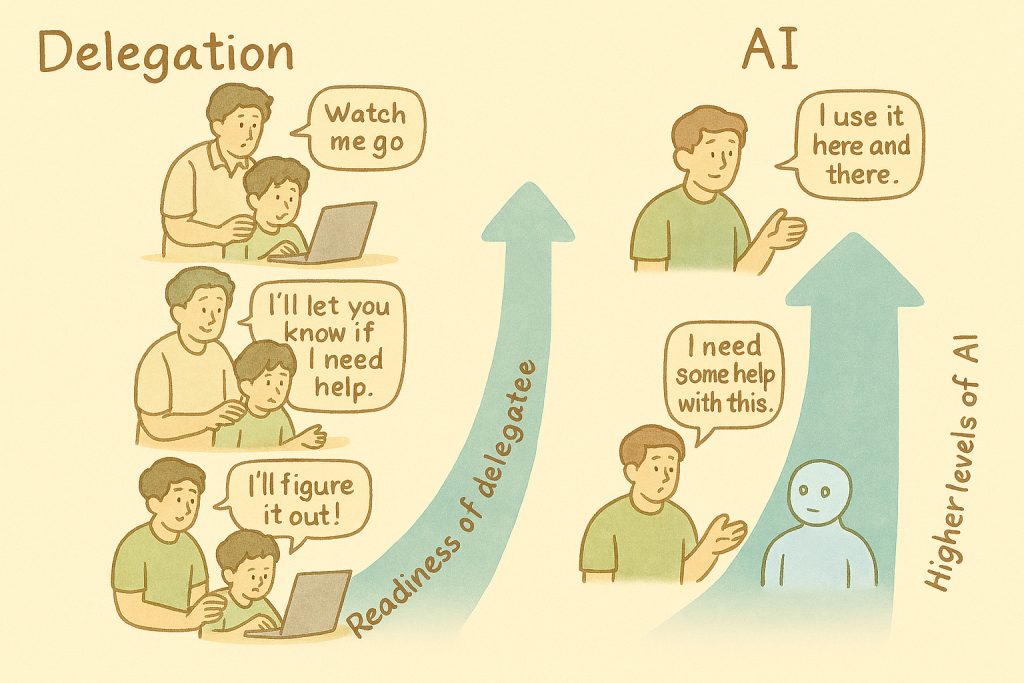Over the weekend I was out at a food court to meet a former colleague of mine. She had got along a couple of her young friends as well. As we were conversing, the young lady, who had come along with my friend said “When I discuss with my manager what I have to do – the constant response is you need to increase your visibility.” She added “I have seen people around me, who do much less than what I do, but seem to make a lot of hue and cry, which I can’t understand.” I could see she was pretty much annoyed that her good work did not get noticed, but some ordinary piece of work with a trumpet seems to have reached the right ears. I empathized with her and shared the story of “The 2% Masala Impact” with her.
The story begins
Over the years I have learnt from a lot of people, and events. As I looked back – I noticed that the big differentiator (and at times frustrating) has been the 2% masala impact. Before I share those stories, I thought I would provide the story of 2% masala first.
I wanted to get quality veg pulao that was really good for my health. I went to two restaurants and ordered a veg pulao in both the places. After I had it, like most people, I drew a comparison between the two. Before I talk of my result, I want to give you all the data.
First, let’s get into the kitchen and see what happened in both the cases.
A typical veg pulao is made of 70% rice, 28% vegetables. (If you think the veggie content is high – ask my children, they bemoan that my wife ensures that we have lots of veggies in everything!)
Restaurant A cooked using of the best grade of basmati rice (9/10); used freshly grown organic vegetables (8/10); used the masala reasonably well (7/10). Restaurant B cooked using of a good variant of basmati rice (7/10); used freshly grown vegetables too (6/10); and made a better use of the masala (9/10). So what happened after that?
I applied my analytical brain and scored both of them. Here it goes:

Voila! As expected Restaurant A’s veg pulao is nearly 25% better than Restaurant B.
So logic follows that Restaurant A has provided me with better food than Restaurant B. But my tongue, the ultimate decider, feels Restaurant B is great!
Well, the way the chef handled the 2% masala in Restaurant B (9/10) was better than Restaurant A (6/ 10). So the 2% masala made such a huge impact – when ideally Restaurant A’s pulao was good for my health.
If only Restaurant A did a 2 point improvement with 2% masala – just imagine what an outstanding product it would be! Would it not be truly be the best pulao in content and taste!! The scores of Pulao A and Pulao B would be now 8.94 (8.80 + 0.14) and 6.76. Imagine how much more effort would Restaurant B have to put in to match Restaurant A – nearly 25% more.
So the true value of the majority 98% (which is the primary purpose of eating it), is decided by that tiny little 2% masala!
Let’s change the setting
Now let’s take this to our workplace.
There were times I took a complex piece of work, did a very good job, and just about made the story. Yet someone else who took the lighter work and just did their job ‘but’ made a very good presentation was more appreciated.
Do you think that when I did better in 98% of the (real) stuff, the stupid 2% presentation ruined it? Do you think I felt that people cared more for how I presented than what I did (the real stuff)?
In fact whenever I went attend a training (especially the softer aspect ones) I would feel most of the session worthless, until I suddenly found that little nugget of wisdom I could carry home back with me. So 15 – 30 minutes of a 3 day program decided how useful it was to me. But the challenge was that I did not know when that 15 – 30 minutes would come over the 3 days. So I had to sit through intently and patiently listening to all the 3 days.
Or just look at the story of the young lady I met last weekend? How much did her disdain for doing the 2% trumpet impact her?
What do you think? Ponder over it. Do you have such stories to share? Do you feel this paradigm is unfair?
So what do you think 5% masala could do? Well that’s a story for another time.
As I conclude
If you see, “the 2%” is the door-keeper, it’s important to look outside in. The first thing that people notice is the outer layer. Yes, the outer layer is only 2% of you, but it has already got an out sized ability – The ability to make the first impact!
In today’s world, when most organizations are constantly running their lives on a quarter to quarter basis, not many people have the patience to discover your true value. So do not ignore the 2% door-keeper to your future (when your 98% is brilliant!).
If the 2% is the core of you that makes the out sized impact, continue to polish and nurture that 2% so that it always continues to shine out and dazzle.
Either way – you cannot ignore the 2% masala impact!



